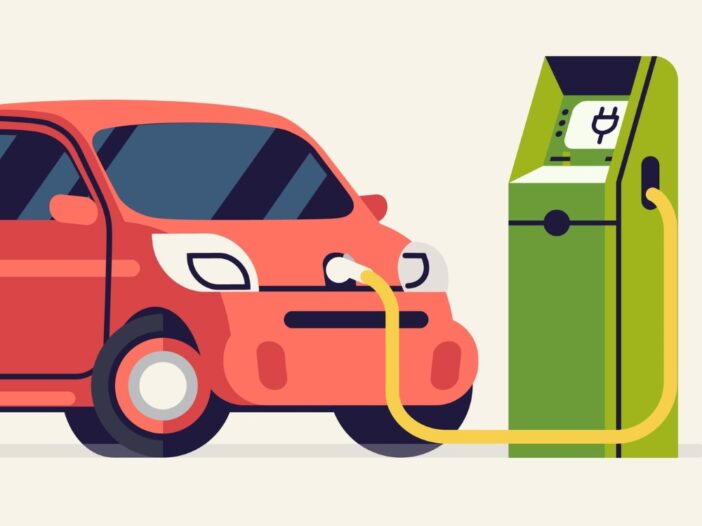In today’s Money Morning…demand for electric cars is still rising…automakers aren’t keeping up…we need more raw materials…and much more…
Things have been difficult out there the last couple of weeks.
The Nasdaq is down 12% in the last month, and the ASX 200 has caved almost 7% in the same time frame.
Bitcoin [BTC] is down, gold is down.
Nothing’s been spared, not even renewable energy stocks.
And while we are seeing some green shoots today, there’s still a lot to worry about.
War…the fallout of China’s COVID-zero strategy…recession…
And, of course, the big one, higher inflation and interest rates.
Overnight, US Federal Reserve Chairman Jay Powell said that he ‘won’t hesitate’ to move rates past neutral.
Let’s not kid ourselves.
Things are changing, and risk tolerance is shifting.
Still, part of me thinks that central banks have taken their time to change their view of inflation from ‘transitory’ to something they need to tackle.
So, while interest rates are going up, it’s clear they aren’t in a hurry. Money could stay cheap for a little while longer.
The big question out there is where to park your money in times like this when real interest rates are negative.
One of the big ones for me is gold. Gold usually does well in these scenarios.
The other is looking at long-term trends that have a lot going for them.
And the energy transition along with critical materials needed for making EVs is still, for me, one of the most exciting ideas out there by far.
Demand for electric cars is still rising
China is a top economy and has the largest EV market in the world.
But while the recent COVID lockdowns have shut down factories, dealerships, and hit overall car sales in April (they dropped 48% from a year ago), it hasn’t been the same for EVs and plug-in hybrids.
Sales for these were up 45% for the month when compared to the previous year.
And demand could continue to rise as petrol prices keep hitting consumers’ pockets.
In a recent study, the Zero Emission Transportation Association (ZETA) followed for six months the cost per mile for both EVs and petrol cars. What they found is that in the US, when considering overall costs, petrol cars were between three and five times more expensive to drive than EVs.
It echoes another study from think tank Energy Innovation.
They looked at financing costs, taxes, rebates, tax credits, state fees, fuel, maintenance, and insurance.
On average, they found it was cheaper to own an EV in the US than a petrol car. This, however, is conditional on the federal tax credit of US$7,500.
As they said:
‘Our modeling finds that total cost of ownership is significantly lower for EVs than for gasoline cars, with owners saving on average US$6,000 over the vehicle’s lifetime.’
EVs have fewer moving parts, which means less maintenance costs. They are also more efficient than petrol cars.
And, as I mentioned last week, EVs may also have extra perks that petrol cars don’t have. They can be used as ‘batteries on wheels’ to power homes during a blackout.
Last but not least, governments are also pushing for a shift to EVs.
The EU wants to ban petrol, diesel, and hybrid car sales by 2035. US President Joe Biden has a target to make 50% of all new US vehicle sales electric by 2030, and China wants to have 40% of all car sales be electric by 2030.
So demand for EVs will continue to grow.
Automakers aren’t keeping up…we need more raw materials
Things were quite subdued at the Future of the Car summit last week.
As the Financial Times reported recently:
‘The tone at the summit this week was markedly more reserved. Not a single leading executive announced higher targets for electric vehicle sales, or battery production.’
Even Elon Musk played down Tesla’s recently established goal of delivering 20 million cars a year by 2030, up from only a million last year. As he said, this was more of ‘aspiration, not a promise’.
The culprit? Mainly raw materials.
As Musk said:
‘There are some raw material constraints that we see coming, in lithium production, probably in about three years, and in cathode production.’
This was echoed by Volkswagen, as chief executive Herbert Diess said:
‘We need the energy, we need the charging networks, we need the infrastructure, for sure, we need the cars, but we also need the batteries and the raw materials.’
It’s why, as I’ve mentioned recently, automakers are even looking at getting involved in mining to secure their supply chains. Something that Musk touched on during the summit:
‘It’s not out of the question. We will address whatever limitations are on accelerating the world’s transition to sustainable energy. It’s not that we wish to buy mining companies, but if that’s the only way to accelerate the transition, then we will do that.’
Critical materials for EVs will need plenty of investment in the coming years to meet demand.
Benchmark Minerals expects that we will need US$42 billion in investment over the next eight years to meet 2030 demand for lithium alone. Lithium demand is expected to quadruple to 2.4 million tonnes of lithium carbonate equivalent, up from the 600,000 tonnes that is expected will be produced this year.
Don’t get me wrong, stock picking will be key. Not every company will do well, and many will fail.
But we’ll likely see a lot of money flowing into this space.
By the way, if you are looking for ideas on what to buy right now, we’ve recently partnered with Jim Rickards to build a ‘Fat Tail Portfolio’ for these crazy times. You can check it out here.
Until next week,
 |
Selva Freigedo,
For Money Morning
Selva is also the Editor of New Energy Investor, a newsletter that looks for opportunities in the energy transition. For information on how to subscribe, click here.

